Solidago altissima (Late Goldenrod) - photos and description
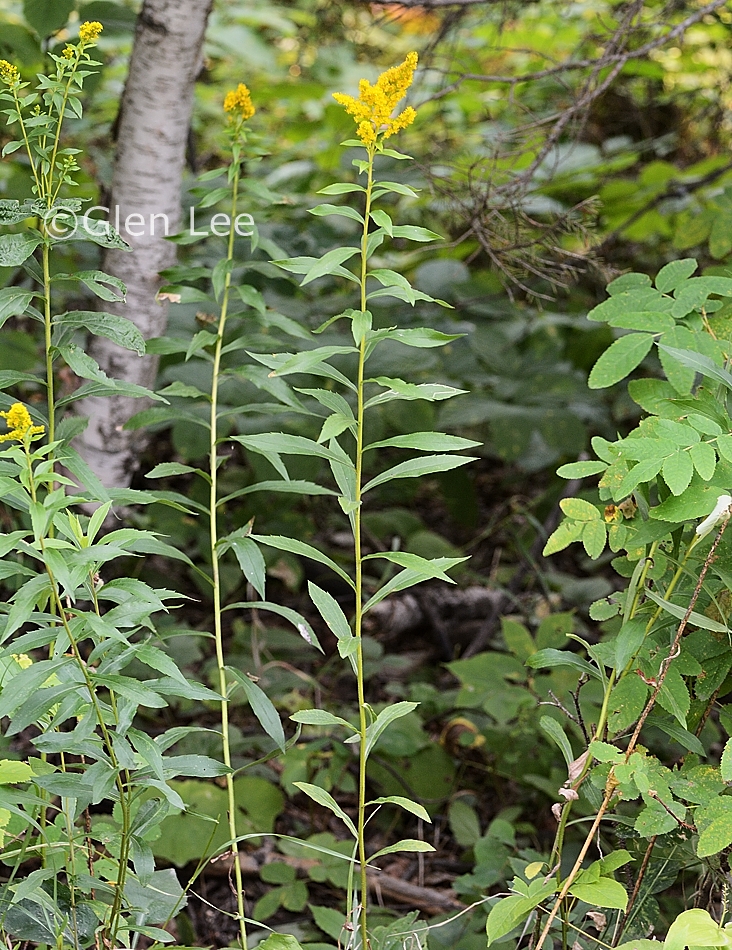
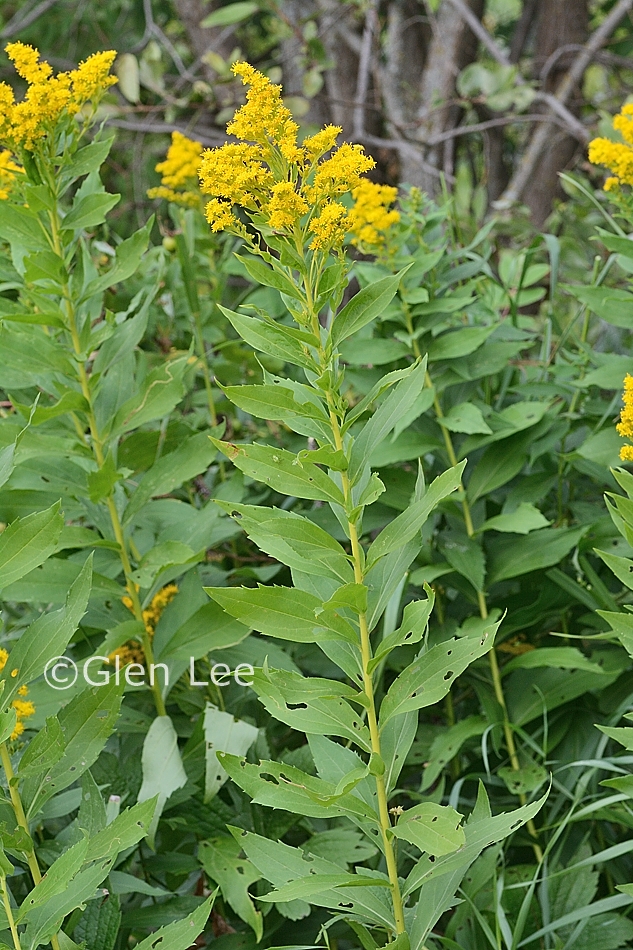
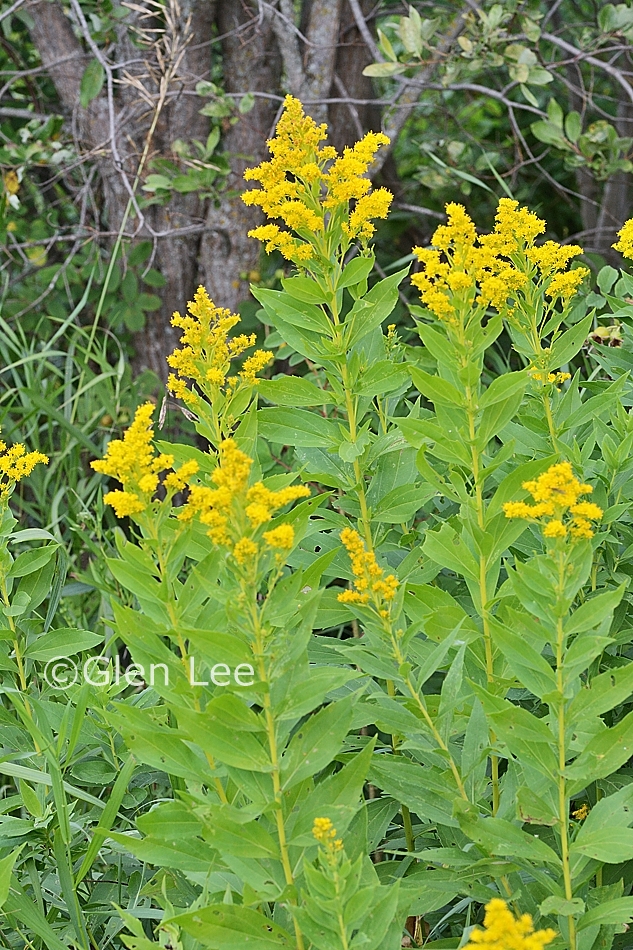
Species is rhizomatous, a colony of S. altissima.
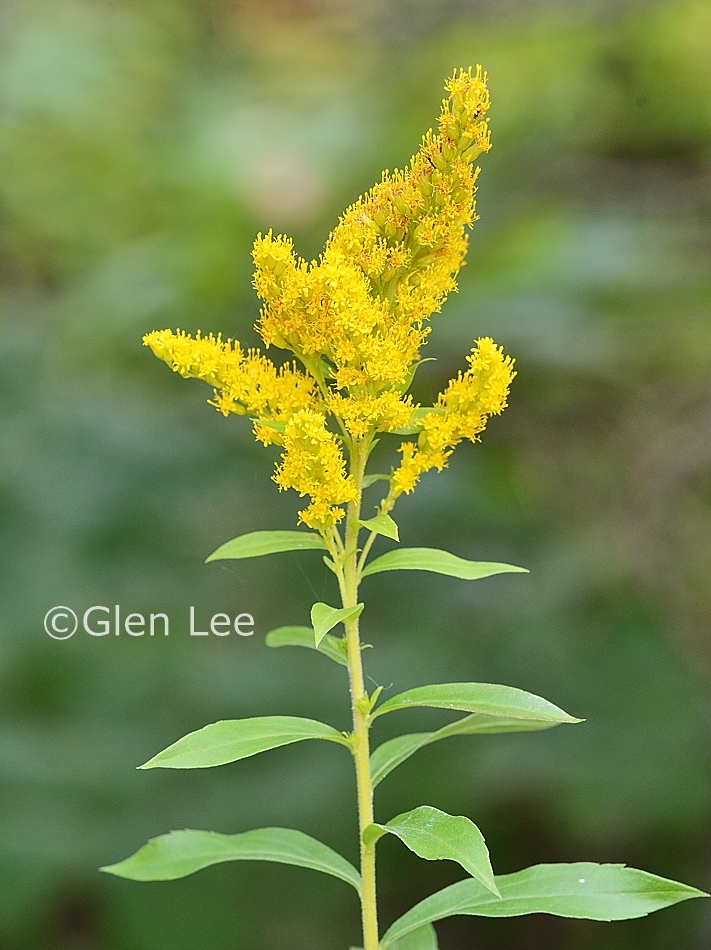
Inflorescence is not leafy (S. lepida has a leafy
inflorescence).
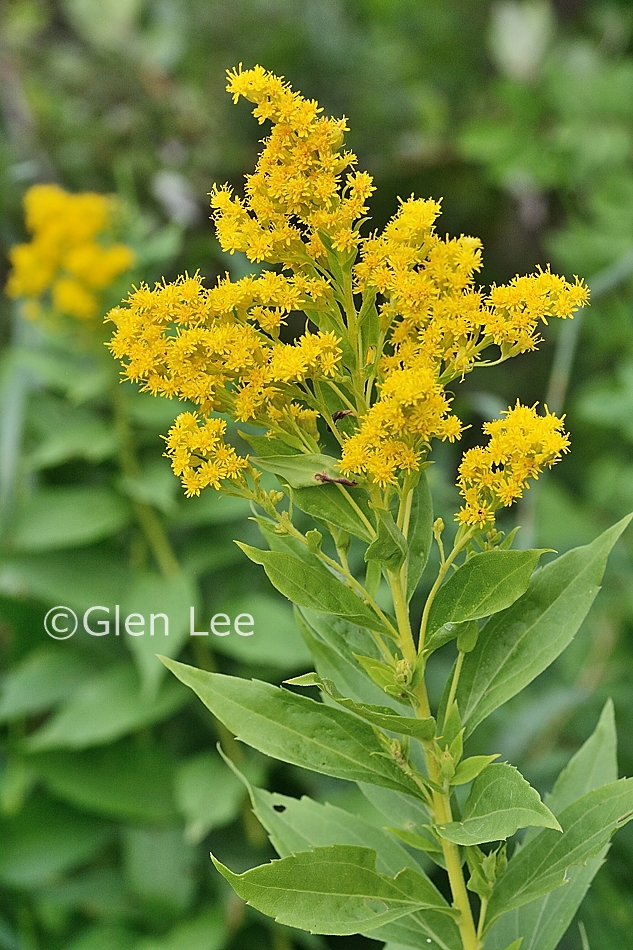
Inflorescence is not leafy (S. lepida has a leafy
inflorescence).
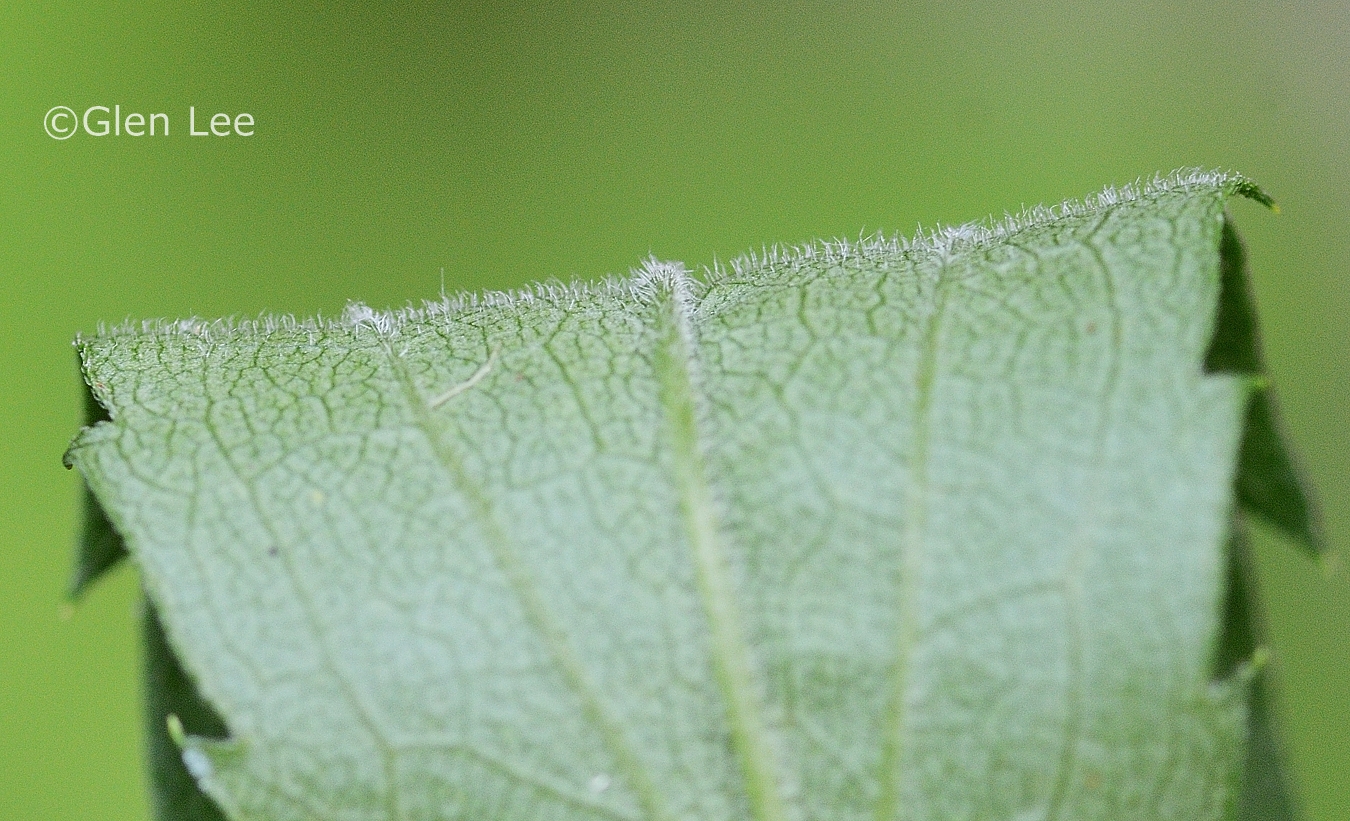 Bottom of leaf blade. I would call this quite hairy, both on the leaf surface and on the nerves, especially when compared to S. lepida.
Bottom of leaf blade. I would call this quite hairy, both on the leaf surface and on the nerves, especially when compared to S. lepida.
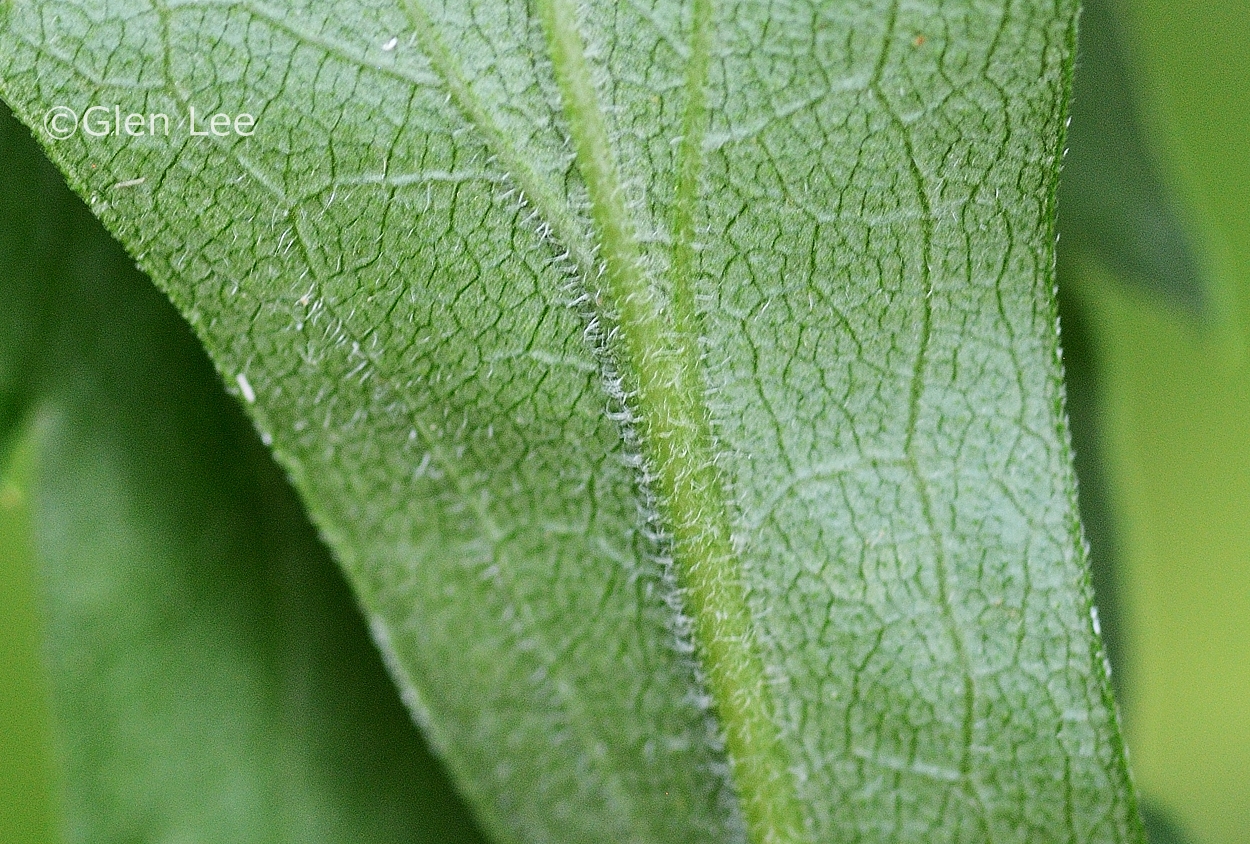 Leaf
nerves villous.
Leaf
nerves villous.
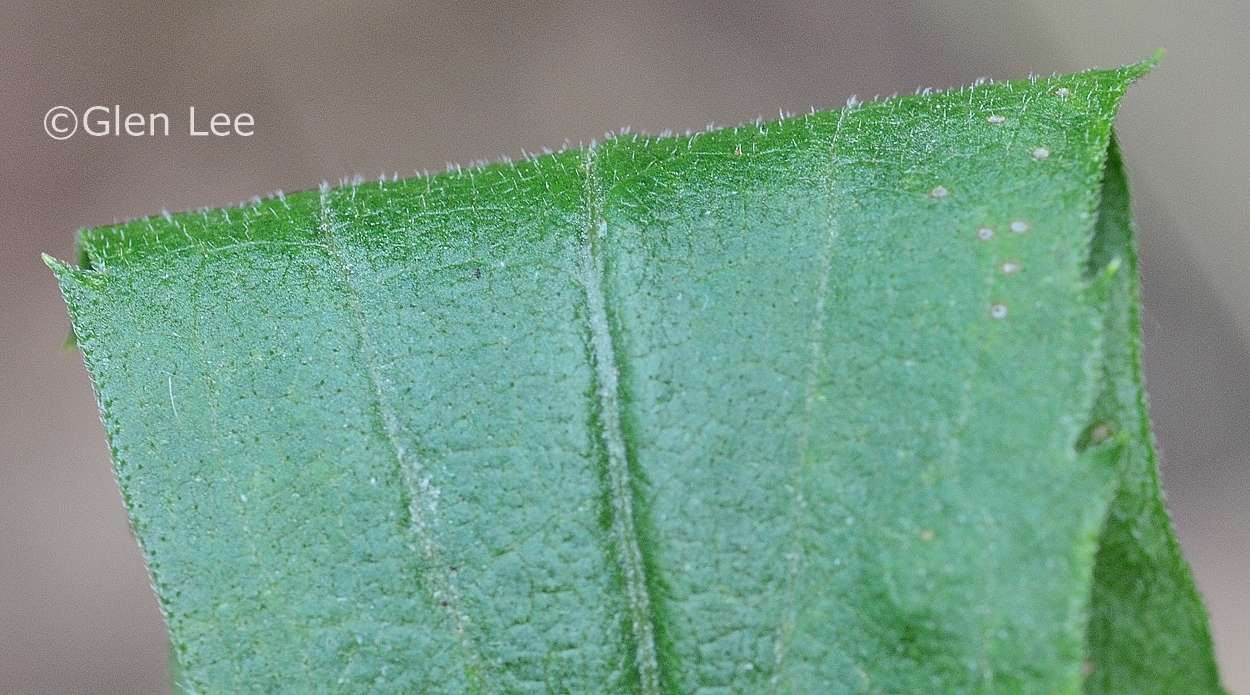 Top
of leaf mid-stem, FNA describes this hairiness as +- scabrous.
Top
of leaf mid-stem, FNA describes this hairiness as +- scabrous.
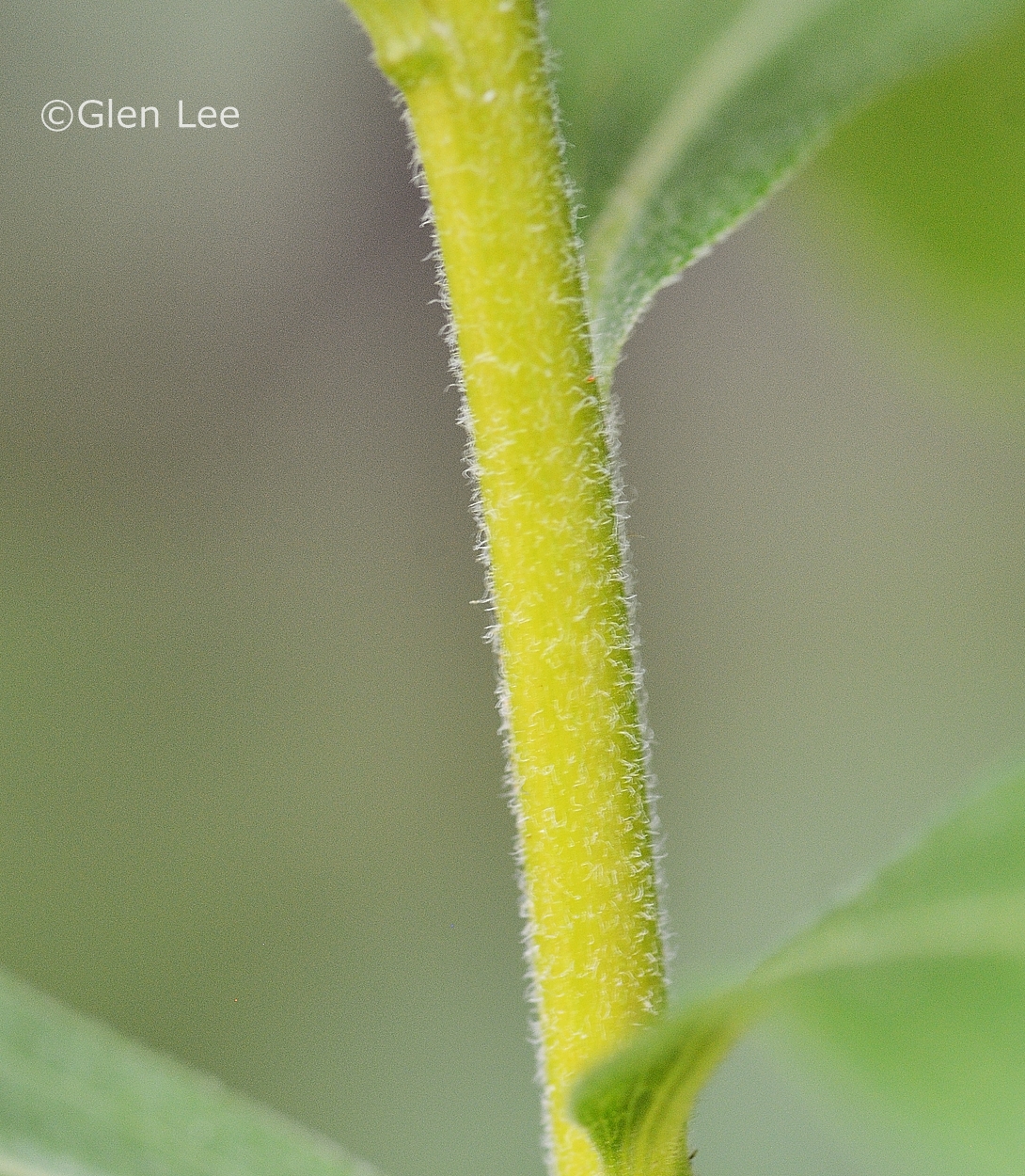
Stems pubescent.
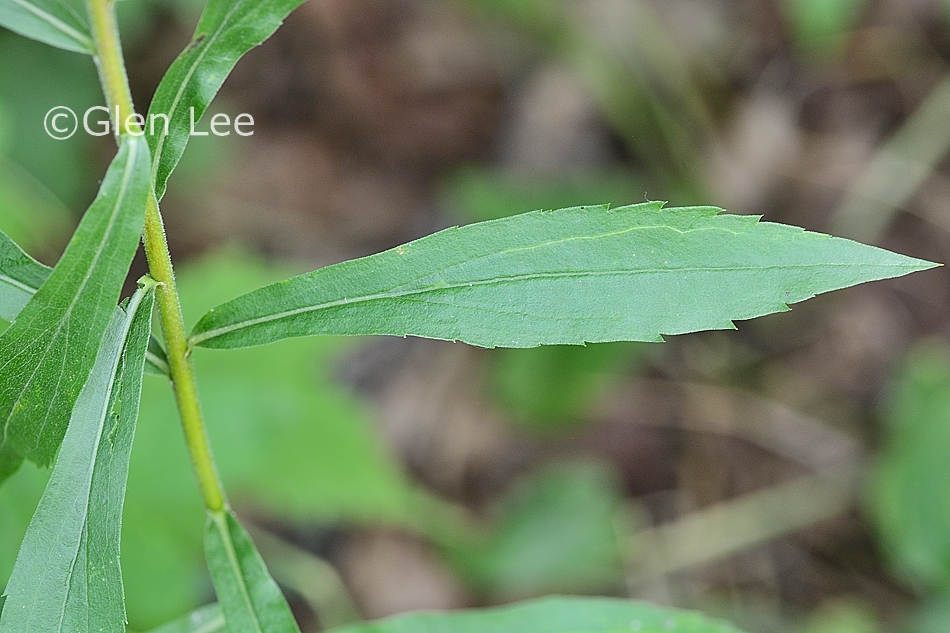
Leaf mid-stem, shallowly toothed; This species has large leaves
among Goldenrods.
Origin: Native.
General: Tall perennial with single stems, a
pyramidal inflorescence, and leaves 4x long as wide. Plants
rhizomatous, stem is pubescent, leaves have various levels of pubescence.
Note: this species and Solidago lepida have been split by
taxonomists from Solidago canadensis. Solidago canadensis
as now described is not found in Saskatchewan, grows in eastern and
central Canada.
Flowers: Inflorescence is a pyramid-shaped panicle. Inflorescence is not leafy (note that similar species S. lepida has a leafy inflorescence). We measured a single flower at 4 mm diameter and 5 mm long.
Leaves: Leaves are alternate and reduced in size upwards, sessile, lanceolate to elliptical, finely serrate. Top of leaf scabrous (short stiff hairs) and with various degrees of pubescence of the veins and surface of the bottom of leaves. We measured a leaf at 11 cm long by 2 cm wide.
Height: Height is listed in Flora of North America to 200 cm, we measured plants to 115 cm tall.
Habitat: Open woods, scrublands, and moist meadows. Dr. Semple of the University of Waterloo and author of the FNA treatment of S. altissima has published a North American range map for S. laltissima (can be viewed on the U Waterloo link below). It shows S. altissima occurs in SK from the northern Parklands south to the United States... south of a diagonal line from just south of Duck Mountain on the MB border west across SK to about Lloydminster on the AB border.
Abundance: Common.
Similar species: Very similar to
Solidago gigantea which is
a taller goldenrod with a pyramidal inflorescence. However that species has glabrous stems,
while the stems of Solidago altissima are pubescent.
Somewhat similar to Solidago mollis which is also a taller
goldenrod with a pyramidal inflorescence. However that plant has leaves
only 2-3x as long as wide, and is covered in fine hairs (puberulent)
making its foliage velvety to touch and giving it a greyish-green
appearance.
And, very similar to
Solidago lepida
which was split from Solidago canadensis
along with Solidago altissima
(the plant described on this page).
To distinguish between
S. altissima and S.
lepida (from the FNA key) it’s
the hairiness of the leaves and leafiness of the inflorescence:
- S. altissima leaves
moderately to densely villous or strigillose, sometimes more so on
abaxial (leaf bottom surface) nerves...
(leaves moderately or densely hairy)
- Solidago lepida leaves glabrous
or sparsely villoso-strigillose, more so abaxially than adaxially (leaf
top surface), especially along main nerves... (leaves hairless or
sparsely hairy)
- The FNA species description of S. lepida
states its inflorescence usually leafy while the inflorescence of
S. altissima is not described
as leafy. We observed this with both species.
-
Also, S. lepida has varying degrees of minute glandular hairs
in its inflorescence and upper leaves, however FNA states a 30x-70x
magnification is needed to see them. We use a good 10x loupe and
examined many flower heads but couldn’t see any glandular hairs, I
guess not enough magnification. So no help in identification in the
field. With the help of my friend Colin and his microscope, I looked at
these hairs at 40X magnification and they were indeed glandular.
Vascular Flora of Alberta states S. altissima "stems
often with large (1-3 cm) insect galls, S. lepida stems rarely
with galls". The day we photographed these plants we saw dozens of these
Solidago plants, no galls on any stems, so no help.
S. canadensis is still described by taxonomists, but Dr. Semple
of the U of Waterloo states S. canadensis as it's now described
is not found in Saskatchewan, it is found in Eastern and Central Canada.
More information:
University of Waterloo Astereae Lab. (Dr. Semple of the Astereae Lab
is one of the authors of the Solidago treatment in FNA).
Flora of North America (FNA).
When and where photographed: We took the above photos August 6th, boreal forest in Duck Mountain Provincial Park, about 300 km northeast of our home in Regina, SK.